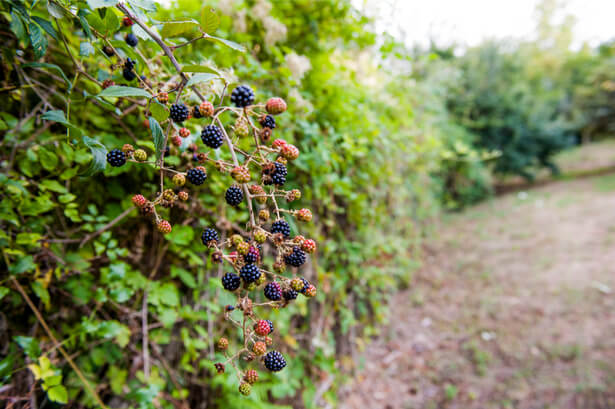Red fruits are plentiful and do not require a lot of work in the vegetable garden even though their price on the market stall tends to increase. Good reasons to make room for them at home, right?
Haaaaa, the red fruit! What a joy to discover one by pushing aside a slightly thick foliage that hid it from your view. And another and another… and there you are quickly with a full bowl to take home. Don’t hesitate to invite red fruits into your garden, they will not disappoint you.
Red fruit: planting tips for gourmets
Let’s start with pleasure… If you like red fruits, there’s no need to plant dozens of each variety. In fact, one red fruit is followed by another red fruit, and this goes on all season long!
Multiplying the type of red fruits grown also multiplies the tastes available to you © Nika Art
THE strawberry plants open the ball in the spring, quickly followed by the raspberry bushes then all the others going from cassis to currantsthen to blackberries at the end of summer to start again with strawberries and raspberries if you have planted remontant varieties.
By planting only a few feet of eachso you can pick and eat them on the vine almost all year round.
Who are the red fruits?
And The red fruits now grown come from many cultivars productive with varieties particularly suited to certain terroirs, They are, originally, wild fruits. This information is to be kept in mind when you grow them, because it gives you a fairly simple, but effective idea of their needs.
The needs of red fruits
As a general rule, red fruits, which have many virtues, appreciate cool soils all year round. So don’t hesitate to mulch them. as it should be, they will thank you for it.
They also like relatively rich soils, so you can provide them with manure well-ripened or quality compost once autumn arrives.
Raspberry bushes
For raspberry bushes, if Mulching is simply essentialtheir size is also a key element in their production.
To do this, Cut back the branches that have borne fruit from harvest for non-remontant varieties, and in the fall for remontant varieties.
Mulberry trees
Rustic, the mulberry trees only need a supply of manure in the fall even if it is not vital to them.
Their rapid growth and particularly prickly thorns will quite naturally push you to train them to make harvesting easier!

Mulberry trees can also serve as a natural barrier © Fabio Pagani
Blackcurrant and gooseberry bushes
Both are pampered in the same way. Mulch them properly once the spring well installed and once the season is over, prune the oldest branches to leave only a dozen at most.
Strawberry plants
If you want to harvest strawberries, don’t expect to do so without mulching! When planting, do not hesitate to mulch the strawberry plants. so much so that they don’t even see each other anymore…
At the start of the season and if your strawberry plants seem a little fragile, You will have to be patient and eliminate the first 2 or 3 flowers. on each foot so that the strawberry plant can concentrate on its development and not on the production of fruit. It will catch up later by producing larger and tastier fruit!
Blueberry bushes
Blueberry bushes are demanding and their cultivation is not within everyone’s reach. They have both need some shadebut still sunny, a good one mulchingbut above all of a land which suits them, which is more delicate.
So plant them in the fall. in an acidic soil such as heather soil for example, which you will mix with a forest humus (for example, you can prepare leaf compost a year before planting).
Article updated
consoGlobe also recommends…
Source: www.consoglobe.com


